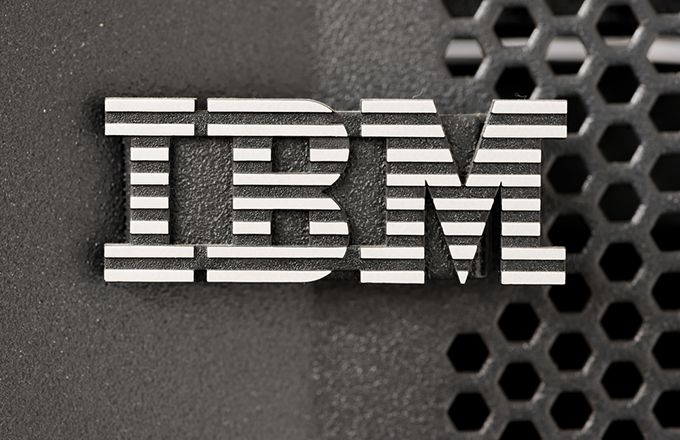[ad_1]
Dow component International Business Machines Corporation (IBM) could trade higher after receiving letters of intent from six banks to issue stablecoins, a.k.a. “tokens,” on the tech giant’s World Wire payment network. Traditional currencies will underwrite the coins, removing a major obstacle for traditional businesses to adopt the futuristic cryptocurrency system. When implemented, the network will support much faster movement of capital than the low-tech worldwide banking system currently in place.
IBM took the top slot in blockchain technology in a September 2017 survey by Juniper Research, a digital commerce and financial technology research firm. More than 400 company founders, executives, managers and IT leaders responded to the questionnaire, with 43% of enterprises “actively considering” or “in the process of deploying” blockchain technology choosing IBM over Microsoft Corporation (MSFT), which took the second slot with 20%.
Monetizing IBM’s Blockchain Initiatives
The company’s commitment to blockchain research and development has been largely ignored by Wall Street during the collapse of the cryptocurrency bubble, but more durable systems are likely to arise from the ashes, with major companies eventually committing to the digital currency. IBM’s open source Hyperledger blockchain has already built a remarkable roster of Fortune 500 clients and could eventually form the core for hundreds of business applications in coming years.
However, IBM will need to monetize these initiatives before attracting the upgrades needed for the stock to end a brutal six-year bear market. That will require a sophisticated World Wire revenue plan with a well-defined path to higher income, potentially ending years of slowing growth for the old-school tech behemoth. For now, the initiative remains in an embryonic state, awaiting the regulatory approvals needed to switch on the service.
IBM Long-Term Chart (1994 – 2019)
A multi-year downtrend ended at a split-adjusted $10.09 in 1994, giving way to a modest uptick that escalated into a parabolic rally before stalling at $138.35 in 1999. That marked the highest high for the next 11 years, ahead of volatile downturn fueled by the collapse of the internet bubble. IBM stock found support a four-year low in the fourth quarter of 2002 and turned higher, stalling near $100 in 2004.
The stock mounted that resistance level in 2007 and gained ground into the second half of 2008, finally topping out less than 10 points below the 1999 high. Aggressive sellers took control during the economic collapse, dumping price into a six-year low in the upper $60s in 2009. That marked a historic buying opportunity, ahead of a steady uptick that completed a 100% retracement into the 2008 high in 2010.
A breakout into 2011 caught fire, lifting the stock through a series of new highs into 2013’s all-time high at $215.50. It completed a triple top pattern at that level and broke down at year end, entering a long-term downtrend that posted a series of lower highs and lower lows into December 2018’s nine-year low at $105.94. Price action in the first quarter of 2019 has been constructive, adding more than 30% and 35 points. However, it still hasn’t posted a higher high or higher low, which denote basic requirements for a new uptrend.
The long-term technical outlook will brighten if this rally wave mounts the 50-month exponential moving average (EMA), currently situated at $150. The stock has failed four attempts to hold support at this level since the 2013 top, so expect a battle of wills between bulls and bears if that price level comes into play. Whatever the outcome, a more important test awaits at the trendline of lower highs, with a breakout signaling an uptrend that could eventually reach new highs.
The Bottom Line
IBM’s deal with six banks to use fiat-backed cryptocurrency in a worldwide payment system could signal the start of the company’s long-awaited renaissance.
Disclosure: The author held no positions in the aforementioned securities at the time of publication.
[ad_2]
Source link Google News

